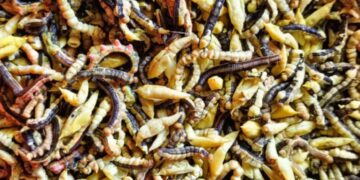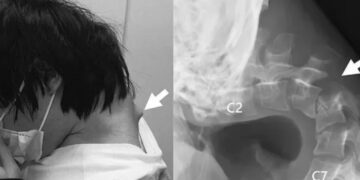Para Thomas Sheridan, um britânico de 35 anos originário de Liverpool, a frase “você é o que você come” assume contornos dramáticos e limitantes. Diagnosticado tardiamente com Transtorno Alimentar Restritivo Evitativo (TARE), ou ARFID (em inglês), ele vive refém de uma dieta incrivelmente seletiva, onde a simples ideia de consumir a maioria dos alimentos é suficiente para desencadear reações físicas adversas. Sua história é um mergulho na complexidade de um transtorno alimentar pouco compreendido, que vai muito além de ser um “comedor exigente”.
Um Cardápio de Sobrevivência: Torradas, Cereais e Doces
A rotina alimentar de Sheridan é, para muitos, inimaginável. Ele sobrevive basicamente com torradas de pão branco com manteiga (chegando a consumir dois pães por dia), três tigelas do cereal Shreddies, um pacote do salgadinho Hula Hoops e doces da marca Haribo. Ele confessa nunca ter provado frutas, vegetais ou carne. “É uma tortura,” desabafa Thomas. “Eu não estou vivendo no momento, estou apenas sobrevivendo.”
A aversão a outros alimentos é visceral. Ele relata não ter compreensão da maioria das texturas ou sabores e sentir-se fisicamente doente só de pensar em provar uma fruta ou vegetal. Uma tentativa de comer um sanduíche de ovo com linguiça resultou em vômito violento. Para compensar as deficiências nutricionais, Sheridan depende de suplementos proteicos e vitamínicos, mas até estes precisam ter sabores específicos que ele consiga tolerar. A dificuldade em manter essa dieta restrita por vezes o impede de comprar até mesmo os poucos alimentos seguros que consome, como o cereal Weetabix.
Uma Batalha Desde a Infância Contra o Desconhecido
A luta de Thomas contra a comida começou cedo. Nascido com saudáveis 4kg, seus pais, Tom (65) e Sheila (59), contam que ele não apresentou hábitos alimentares incomuns até os 18 meses, quando “um dia, simplesmente fechou a boca”. As tentativas de introduzir novos alimentos foram infrutíferas. Médicos da época chegaram a sugerir que os pais o deixassem passar fome até que comesse, e seu pai tentou suborná-lo com presentes, sem sucesso.
Na escola, a situação não melhorou. Thomas tinha permissão para ir para casa na hora do almoço comer torradas, pois não conseguia enfrentar as refeições escolares. Ironicamente, em uma experiência de trabalho organizada pela escola, ele foi colocado no departamento de catering de uma faculdade. “Eu preparava todos os alimentos, era muito bom nisso e pensei em talvez cursar algo relacionado à gastronomia,” recorda. “Mencionei isso, e as pessoas simplesmente diziam ‘qual o sentido disso, você não consegue nem comer uma batata frita?’.”
O Peso do ARFID na Vida Adulta: Isolamento e Sonhos Adiados
O impacto do transtorno se intensificou na vida adulta. Sheridan enfrenta dificuldades de socialização, especialmente quando os encontros envolvem comida, sentindo-se frequentemente “isolado”. “Quando você se torna adulto, vê a opinião das pessoas mudar sobre você quando descobrem que você tem um transtorno alimentar,” explica. A condição o impede de trabalhar atualmente, pois o esforço físico e a dificuldade de se alimentar adequadamente o debilitam – na última vez que trabalhou por um período de 10 dias, perdeu quase 10 quilos. Seu peso chegou a alarmantes 51,7 kg.
Foi somente em 2023, aos 33 anos, que Thomas recebeu o diagnóstico formal de ARFID. Este transtorno, que apenas em 2022 foi incluído na Classificação Internacional de Doenças da Organização Mundial da Saúde (OMS), difere da anorexia ou bulimia por não estar focado na imagem corporal ou medo de engordar, mas sim na evitação de alimentos devido a características sensoriais, desinteresse ou medo de consequências aversivas.
A Busca por Alívio e a Esperança na Hipnoterapia
Thomas já tentou diversas abordagens terapêuticas, incluindo antidepressivos e terapia convencional para ARFID, mas relata ter tido dificuldades com a inconsistência do tratamento, como a troca constante de terapeutas. Agora, ele deposita suas esperanças na hipnoterapia particular e está arrecadando $8.000 para custear o tratamento. Seu maior sonho é simples, mas para ele, monumental: “Quero viver uma vida normal, poder ir trabalhar e não me sentir uma aberração… poder sentar para uma refeição compartilhada com minha família.” A jornada de Thomas Sheridan é um doloroso exemplo da luta diária e, muitas vezes invisível, de quem convive com o Transtorno Alimentar Restritivo Evitativo.
Fear of Food: The Struggle of Thomas Sheridan
Diagnosed with ARFID at 33, a British man lives on bread, cereal, and sweets, facing isolation and dreaming of one day sharing a normal meal with his family.
For Thomas Sheridan, a 35-year-old Brit from Liverpool, the phrase “you are what you eat” takes on dramatic and limiting dimensions. Diagnosed late with Avoidant Restrictive Food Intake Disorder (ARFID), he lives hostage to an incredibly selective diet, where the mere thought of consuming most foods is enough to trigger adverse physical reactions. His story is a dive into the complexity of a little-understood eating disorder that goes far beyond being a “picky eater.”
A Survival Menu: Toast, Cereal, and Sweets
Sheridan’s eating routine is, for many, unimaginable. He basically survives on white toast with butter (consuming up to two loaves a day), three bowls of Shreddies cereal, a packet of Hula Hoops crisps, and Haribo sweets. He confesses to never having tasted fruits, vegetables, or meat. “It’s torture,” Thomas shared. “I’m not living at the moment, I’m only surviving.”
The aversion to other foods is visceral. He reports having no understanding of most textures or tastes and feeling physically sick at the mere thought of trying a fruit or vegetable. An attempt to eat an egg and sausage butty (a type of sandwich) once resulted in him vomiting “about 10 feet across the room.” To compensate for nutritional deficiencies, Sheridan relies on protein and vitamin supplements, but even these must have specific flavors he can tolerate. The difficulty in maintaining this restricted diet sometimes prevents him from affording even the few safe foods he consumes, like Weetabix cereal.
A Battle Against the Unknown Since Childhood
Thomas’s struggle with food began early. Born a healthy 9lbs, his parents, Tom, 65, and Sheila, 59, say he showed no unusual eating habits until he was 18 months old when, as Thomas recalls being told, “one day I just shut my mouth.” Attempts to introduce new foods were fruitless. Doctors at the time even suggested his parents “just starve him” until he ate, and his father tried to “bribe” him with gifts, to no avail.
At school, the situation didn’t improve. Thomas was allowed to go home at lunchtime to eat toast, as he couldn’t face school meals. Ironically, for a school-organized work experience, he was placed in a college’s catering department. “I was prepping all the foods, I was quite good at it and then I thought about going to college, maybe about food,” he remembers. “I mentioned it, and then people were just like ‘what’s the point of that, you can’t even eat a chip?’.”
The Weight of ARFID in Adulthood: Isolation and Deferred Dreams
The disorder’s impact intensified in adulthood. Sheridan faces difficulties socializing, especially when gatherings involve food, often feeling “isolated.” “When you become an adult, you see people’s opinions change of you, when they know you’ve got an eating disorder,” he explains. The condition currently prevents him from working, as physical exertion and the difficulty of eating properly debilitate him – the last time he worked for a 10-day period, he lost 21 pounds. His weight once dropped to an alarming 8st 2lbs (approximately 114 pounds or 51.7 kg).
It was only in 2023, at age 33, that Thomas received a formal ARFID diagnosis. This disorder, which was only included in the World Health Organization’s (WHO) International Classification of Diseases in 2022, differs from anorexia or bulimia as it’s not primarily focused on body image or fear of gaining weight, but rather on food avoidance due to sensory characteristics, disinterest, or fear of aversive consequences.
The Search for Relief and Hope in Hypnotherapy
Thomas has tried various therapeutic approaches, including antidepressants and conventional ARFID therapy, but reports struggling with treatment inconsistency, such as constantly changing therapists. Now, he places his hopes in private hypnotherapy and is fundraising $8,000 to cover the treatment costs. His greatest dream is simple, yet monumental for him: “I want to live a normal life and be able to go to work and not feel like a freak… to be able to sit down for a shared meal with my family.” Thomas Sheridan’s journey is a painful example of the daily, and often invisible, struggle of those living with Avoidant Restrictive Food Intake Disorder.

































